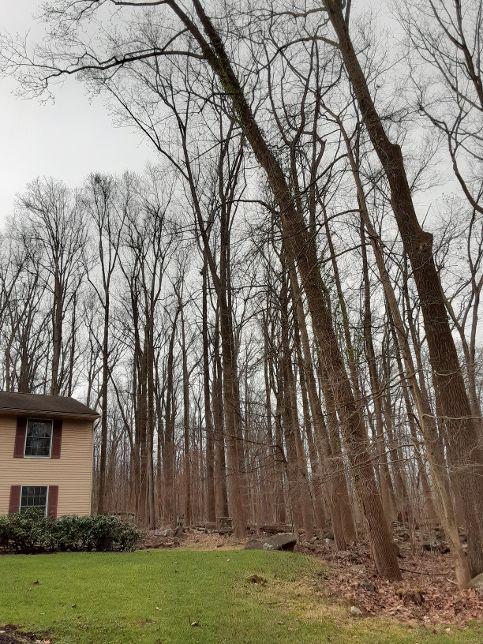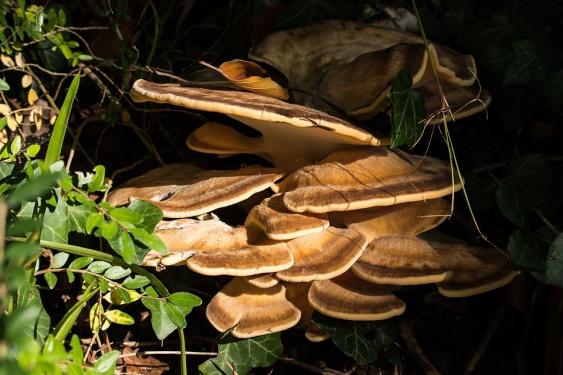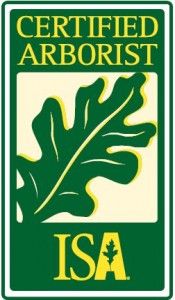Trees are one of the most important parts of your landscape. Not only do they add beauty to your Montgomery or Chester County home, they can increase your property value, help conserve energy and provide shade and cleaner air. Because of their value, including tree service in your residential home maintenance plan can ensure the health of your trees.
In addition, it’s important to educate yourself on some basic signs of a healthy tree vs. an unhealthy tree so you are more aware of your tree’s health and to be proactive in their care.
If you catch problems early, treatment plans may be worth investing in, but sometimes, tree removal is your best option as it won’t make any sense to invest in a treatment plan that isn’t going to produce results. Whitehouse Landscaping is a fully licensed and insured tree removal company that can handle all tree needs.
Signs of an Unhealthy Tree
Leaning Trees
A tree that leans excessively is more at risk of falling. A slight lean usually means that a tree is growing towards the sunlight but the trunk is strong and can support the weight of the branches and foliage. But if the tree has a dramatic lean and has been weakened by disease, pests, or other abnormalities, they may succumb to the constant pull of gravity.
Also notice if your tree has exposed roots and the ground is heaving up at the base of the tree. Tree root damage may be causing your tree to lean and is more likely to experience cracking or falling.

Leaning tree in Schwenksville, PA and is cited to be cut down.
Fewer or Unusual Leaves
If leaves are shriveled, discolored or you’re noticing less leaves and bare branches, it may be a symptom of a sick tree. Sometimes leaves are completely absent in a portion of the tree which might mean that part of three tree is dying. Leaves often are an obvious indicator of a tree’s health.
Fungus Growth
The presence of fungi or mushrooms on a tree trunk or around the base is usually a sign that a tree is decaying (for whatever reason) from the inside out. Fungus is an organism that feeds off dead tissue and the declining tree creates a perfect environment for fungi or mushrooms to grow.
Dying Branches
Storms bring strong winds and it’s common for trees to lose some branches, but a sick tree will lose an abundant amount of branches and they will appear dry and brittle or even show signs of rot or insect damage.
Tree pruning can be extremely beneficial to restoring tree health. Removing diseased, dying, or dead limbs can keep trees from declining.
Deep Cracks, Cavities and Missing Bark
Missing or peeling bark and hollow or decayed areas can be a sign of internal decay. Cracks are hazardous when they compromise the structure of the tree or when the crack is due to internal decay and will not provide enough sound wood in the outer shell to support the tree.
Noticeable Insect Activity
Lots of trees have insects and most are just fine. But there are pests that can harm a tree’s health. So if you notice sticky residue, eggs, visible insects or chewed up leaves, check with a tree service professional to be sure that the presence of insects will not be a threat to your tree.
Whitehouse Landscaping offers a comprehensive Plant Health Care program that focuses on insect control and disease suppression that insures good health and an attractive appearance for your trees and shrubs.

Tree fungus at base of tree.
Don’t Ignore a Dying Tree
If you suspect something is wrong with your tree, you want to take preventative action to save the tree. A dead or dying tree is compromised and can fall during the next major storm. As for tree disease, you don’t want it to spread. Safety and disease spread are two of the biggest concerns not to mention the appearance value you place on it in your landscaping.
A question we often answer is Does Ivy Kill Trees? Read our blog and learn why it’s important to remove it.
Whitehouse Landscaping Understands Tree Health
One of the most important parts of a tree is the root flare. The root flare should be visible all round the tree. If tree bases are over mulched, (called tree volcano’s), it’s poor for the tree’s health and the number one killer of trees. Home builders often are careless in clearing the land and will inadvertently cover the roots with soil. Over time, this compaction causes death to the roots.
Sam Whitehouse, owner and also Certified Arborist at Whitehouse Landscaping can help evaluate and treat your trees for any potential issues. Whether you are looking to restore the health of your trees, remove a hazardous tree that poses a fall risk, or require pruning services, we can help.
If your trees are showing any signs or symptoms, now is the time to act.
For more information about tree issues, and to be proactive and protect your investment in Montgomery or Chester County, contact us at 484-300-4290 to schedule your free consultation or fill out our simple website form, and we’ll be in touch.

